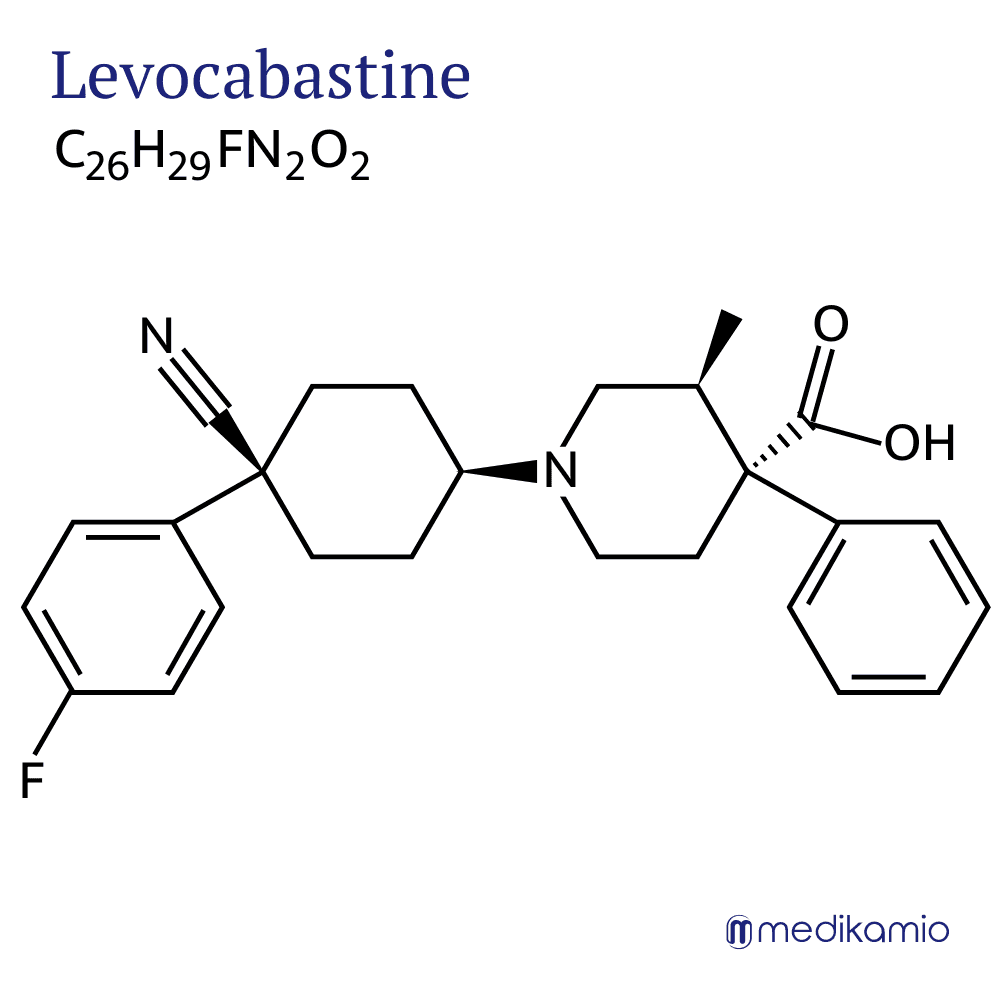Levocabastine acts as a selective competitive antagonist at histamine-1 receptors. This means that it displaces histamine, the substance that normally binds to histamine-1 receptors. In this context, selective means that the active substance only binds to this one receptor. The displacement of the actual substrate (agonist) is called competitive. The competitive antagonist, in this case levocabastine, attempts to displace the actual agonist, in this case histamine, by binding more strongly to the receptor. Histamine is an endogenous messenger substance (mediator) and is mainly released by mast cells in allergies. The excessive release of histamine leads to a series of reactions in the body, which are responsible for the typical symptoms of an allergy, among other things. However, it is important to note that the symptoms only occur when there is an excessive release of histamine and that the respective allergen is responsible for this. An allergy is an overreaction of the immune system to harmless substances, which can be very different.
Levocabastine is converted (metabolized) by the liver and excreted in the urine by the kidneys. Absorption (uptake into the bloodstream) occurs rapidly and mainly through the mucous membranes. The bioavailability, i.e. the percentage of the active ingredient available in the blood, is 30-60% when used as eye drops and 60-80% when used in the nose. The half-life, i.e. the time the body needs to excrete half of the active ingredient, is around 35-40 hours. This favors an effect that can last up to 12 hours.

